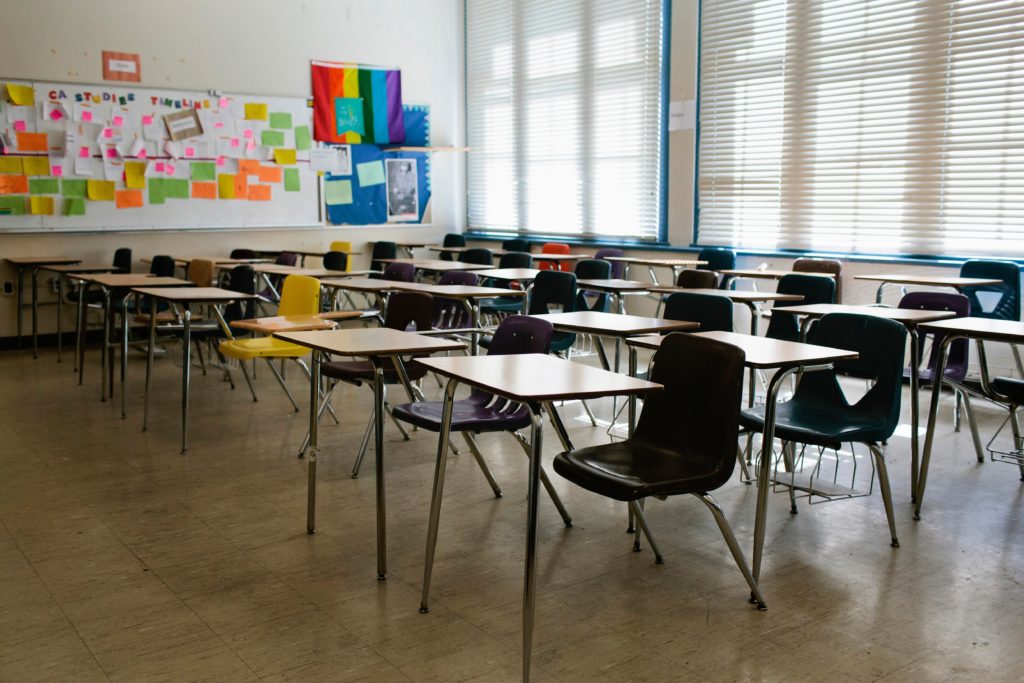
Photo: Alison Yin/EdSource
Since the pandemic, reports and articles in publications across the state and country have bemoaned the rise in chronic absenteeism (missing at least 10% of school days a year).
While theories and solutions abound from educational experts and practitioners, I think they mostly miss the point.
I would argue that chronic absenteeism is merely a symptom of a larger problem that has been building for years, perhaps decades — that too many students don’t find school to be interesting, engaging or relevant for their futures.
This is particularly true for kids of color and other marginalized student populations. Despite the dramatic changes in our society, our education system continues to rely on legacy ideas and historically taught content, rather than preparing our students to navigate an increasingly complex world.
When schools and districts take the time to ask students, families, employers, and community and civic leaders what young people need for future success, it results in a set of skills, competencies and mindsets — often captured in a “graduate profile” or “learner portrait” — vastly different from that for which the state currently holds schools accountable.
An analysis of dozens of these graduate profiles paints a clear picture: Young people need to communicate and collaborate effectively, think critically and creatively to solve problems, be self-directed lifelong learners and culturally competent and contributing citizens, be kind and compassionate, be technically and financially literate, maintain a healthy mind and body, and have a sense of purpose and sense of self. While often implicit, rarely are these skills, competencies and mindsets the explicit goals of our education system.
If and when we organize schools around these competencies, students would see greater value in attending school.
Let me illustrate further by talking about my 13- and 16-year-old sons, who are pretty typical kids.
My older son (a 10th grader) is intellectually curious and prefers learning independently. As such, he thrived during the pandemic by grabbing his teachers’ instructions and materials from his school’s online learning management system, Canvas, getting help when needed, accessing online tools, and completing his school work at a time and in a manner convenient to him and his needs. This last quarter, he was home recovering after a car accident.
While he stayed up late on the phone with friends and slept in, with focused effort of about two hours per day he was able to complete his school work from the comfort of his own bedroom or dining room table. In doing so, he earned all A’s except for one B. He’s now healing, getting around on crutches, but he doesn’t see much reason to return to school except to see friends. He has been chronically absent, but he’s finding success.
My younger son (a seventh grader) cares little about learning but thrives on social interactions with friends. He’s a pleaser, so he does his schoolwork to appease his parents and teachers. Most days, when I inquire about his day, he simply says “it was boring.” His classes rarely spark his interest or inspire him to be curious, explore and deepen his learning. He simply doesn’t see it as relevant; nothing impels him to go to school.
So, how can we shift teaching and learning to engage students in a way that brings them back to school and/or makes them want to be there? First, put students at the center of their own learning. Give them a voice in what they learn. Give them a choice in how they learn and demonstrate their knowledge and skills. Most importantly, give them the agency to take ownership of their learning journey. Enable students to center their own identities, cultures and languages so that they find value, purpose and relevance in their schooling.
Doing this requires teachers and administrators to cede control and become co-creators and co-facilitators of powerful student-centered learning experiences. This can only happen when teachers form trusting relationships with students, know their names and stories, listen to them and create safe learning environments where they feel a sense of belonging.
Of course, none of this is easy, but we have the answers at our disposal. We need administrators to create the conditions that enable teachers to experiment. The state can help by shifting away from an outdated system of accountability that binds compliance-focused educational leaders to a status quo that we can all agree isn’t working.
My wife and I have long been fans of functional medicine — a field of health care that resists the Western medicine tendency to treat every symptom with a pill, and instead seeks to find and treat the root cause of illness. Our education system could benefit from this approach. Instead of treating chronic absenteeism as the problem, let’s see it as one of many symptoms of an outdated education system.
●●●
Roman Stearns is the executive director of Scaling Student Success, a California partnership dedicated to educating the whole child, leveraging the power and potential of a community-developed “graduate profile” or “learner portrait” as a driver for transformational change.
The opinions in this commentary are those of the author. If you would like to submit a commentary, please review our guidelines and contact us.


